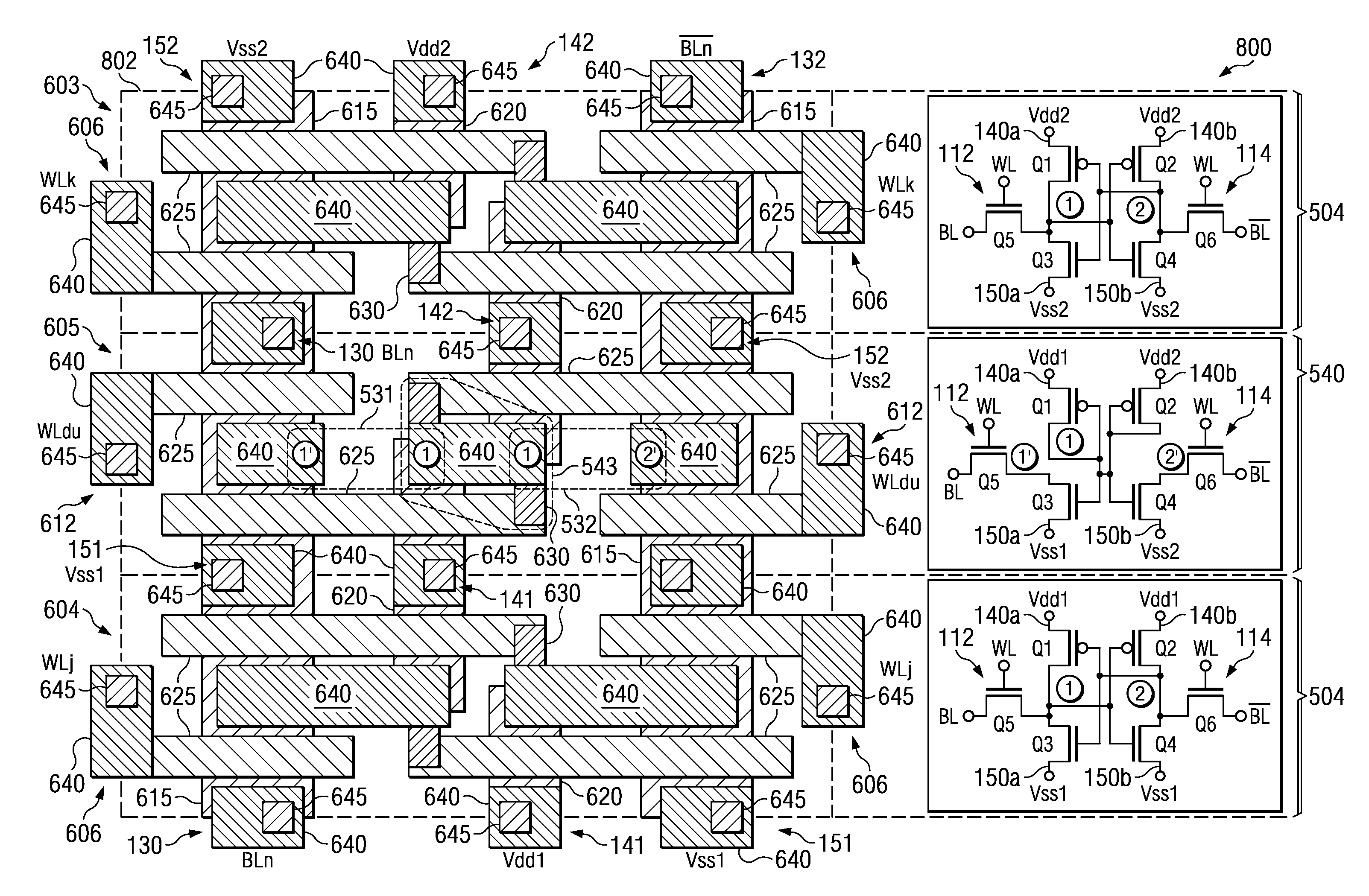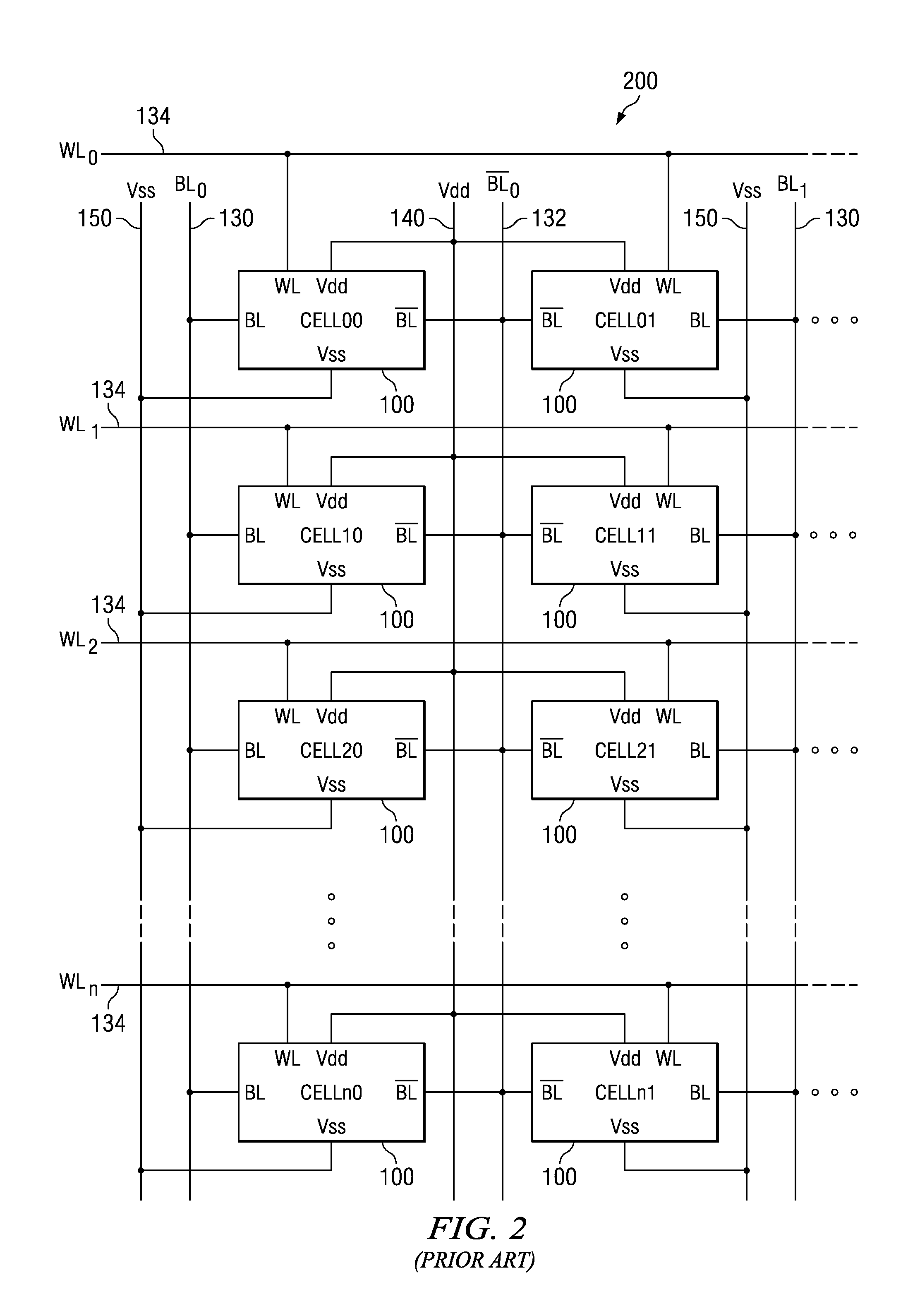Area efficient implementation of small blocks in an SRAM array
a technology of sram array and array block, applied in the field of area efficient implementation of sram array array block, can solve the problems of increasing power dissipation, increasing latency and dynamic power, and significant amount of additional power distribution switching circuitry, so as to improve device performance, reduce pitch, and minimize variations
- Summary
- Abstract
- Description
- Claims
- Application Information
AI Technical Summary
Benefits of technology
Problems solved by technology
Method used
Image
Examples
Embodiment Construction
[0038]The present invention will now be described with reference to the attached drawings, wherein like reference numerals are used to refer to like elements throughout. The invention provides an array structure used for segmenting an array into smaller array blocks, wherein a dummy cell row structure is used to isolate the power supply lines of the array segments on either side of the dummy cell row. The dummy cell structure avoids the use of special OPC conditions at the power supply line and block boundaries by maintaining substantially the same pattern and uniformity as the adjacent cell rows at the lower patterning levels. The dummy cell may be slightly different from the operational cell in the various pattern levels so long as the difference in the dummy cell pattern does not significantly affect the operational cell. In particular, the patterns in the dummy cell may be more significantly different at the M1 and upper metal layers to avoid crowbar currents within and between ...
PUM
 Login to View More
Login to View More Abstract
Description
Claims
Application Information
 Login to View More
Login to View More - R&D
- Intellectual Property
- Life Sciences
- Materials
- Tech Scout
- Unparalleled Data Quality
- Higher Quality Content
- 60% Fewer Hallucinations
Browse by: Latest US Patents, China's latest patents, Technical Efficacy Thesaurus, Application Domain, Technology Topic, Popular Technical Reports.
© 2025 PatSnap. All rights reserved.Legal|Privacy policy|Modern Slavery Act Transparency Statement|Sitemap|About US| Contact US: help@patsnap.com



